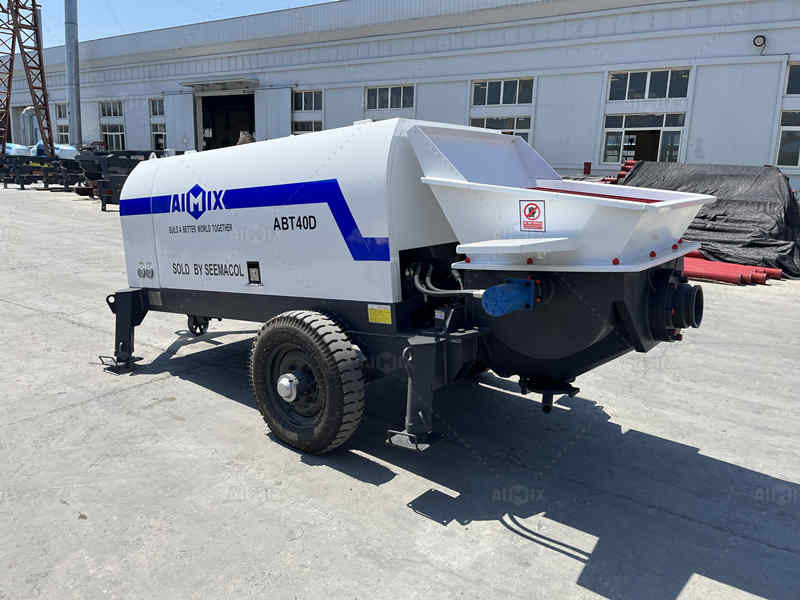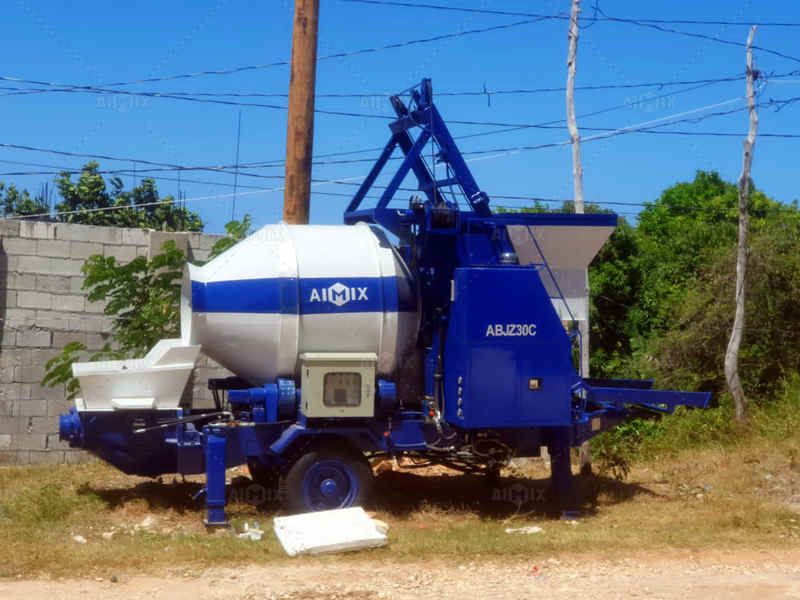Tips for Maintaining the Stability of Stationary Concrete Pumps
Stationary concrete pumps are a vital piece of equipment in construction projects, particularly when concrete needs to be transported over long distances or to elevated heights. Their stability is essential for ensuring smooth operations, maintaining safety, and prolonging their lifespan. Poor stability can result in inefficiency, equipment damage, and potential hazards at the construction site. Below are practical tips for maintaining the stability of stationary concrete pumps.

Choose a Stable Installation Site
The foundation where a stationary concrete pump is installed significantly affects its stability. Key considerations include:
Level Surface: Always place the pump on a level and firm surface. Uneven ground can lead to vibrations and instability during operation.
Load-Bearing Capacity: Ensure the ground can support the weight of the pump and the pressure exerted during operation. Reinforce soft or loose soil with compacted layers or concrete slabs.
Weather Conditions: Avoid areas prone to waterlogging or flooding, as moisture can weaken the foundation and lead to instability.
Secure the Equipment Properly
To ensure that the stationary concrete pump remains stable during operation, you must secure it adequately:
Anchor the Pump: Use anchor bolts to fix the pump firmly to the ground or a concrete base. This minimizes movement caused by vibrations during pumping.
Support Structures: If the pump is placed on an elevated platform, ensure the platform is structurally sound and capable of bearing dynamic loads.
Inspect and Maintain the Support Legs
Many stationary concrete pumps are equipped with support legs to enhance stability. Regular inspection and maintenance of these components are critical:
Check for Damage: Look for cracks, rust, or wear on the support legs. Damaged legs should be repaired or replaced immediately.
Adjust for Leveling: Use adjustable legs to keep the pump level on uneven surfaces.
Lubricate Moving Parts: Apply lubrication to joints and moving parts of the support system to ensure smooth operation and prevent wear.
Minimize Vibrations During Operation
Excessive vibrations can compromise the stability of stationary concrete pumps. To mitigate this issue:
Use Anti-Vibration Pads: Install rubber or composite pads under the pump to absorb vibrations and reduce movement.
Balance the Pumping System: Ensure the pumping system, including the pipeline, is balanced to avoid uneven pressure that could lead to vibrations.
Monitor Pressure Levels: Keep the concrete pumping pressure within the recommended range to prevent surges that may destabilize the pump.
Maintain the Pipeline Properly
The stability of stationary concrete pumps is closely linked to the condition and layout of the concrete pipeline:
Inspect for Leaks or Blockages: Leaks or blockages can cause uneven pressure distribution, leading to instability. Regularly check and clear the pipeline.
Secure the Pipeline: Use clamps and supports to fix the pipeline firmly along its route, preventing movement during operation.
Optimize Pipeline Layout: Minimize bends and turns in the pipeline to reduce resistance and pressure fluctuations.
Follow the Manufacturer's Guidelines
Each stationary concrete pump comes with specific instructions from the manufacturer regarding its setup and operation. Following these guidelines helps maintain stability:
Weight Distribution: Ensure the pump's weight is evenly distributed as per the manufacturer's recommendations.
Load Limits: Avoid exceeding the maximum load capacity, as this can lead to tipping or structural failure.
Assembly Instructions: Assemble the pump and its components according to the provided manual to ensure proper alignment and stability.
Conduct Regular Maintenance
Proactive maintenance is essential for ensuring the long-term stability of stationary concrete pumps:
Check for Wear and Tear: Inspect the pump for worn-out components, especially in the mounting and support systems.
Tighten Bolts and Nuts: Loose fasteners can compromise the pump's stability. Regularly check and tighten all bolts and nuts.
Clean the Equipment: Remove dirt, debris, and dried concrete from the pump and surrounding area to maintain a stable foundation.
Train Operators on Stability Measures
Well-trained operators are better equipped to maintain the stability of stationary concrete pumps:
Setup Procedures: Train operators to identify suitable installation sites and properly secure the pump.
Load Management: Educate them on the importance of maintaining proper load levels to prevent overloading.
Emergency Protocols: Equip operators with knowledge of emergency measures to stabilize the pump in case of unexpected movement or vibrations.
Monitor Weather Conditions
Environmental factors can impact the stability of stationary concrete pumps. Take precautions based on weather conditions:
Strong Winds: Avoid operating the pump in high winds, as they can destabilize the equipment, especially when handling long pipelines.
Temperature Extremes: Cold temperatures can affect the ground's integrity and the pump's materials, while extreme heat may cause expansion and instability. Adapt maintenance practices accordingly.
Rain or Snow: Ensure the pump is installed on a waterproof foundation and cover it to prevent water or snow accumulation.
Invest in High-Quality Equipment
Choosing a high-quality stationary concrete pump with advanced stability features can reduce the risks associated with instability:
Built-In Stabilizers: Opt for models equipped with advanced stabilizing systems, such as hydraulic outriggers or automated leveling.
Durable Construction: Select pumps made from high-quality materials that can withstand wear and environmental conditions.
Reputable Brands: Purchase pumps from trusted manufacturers with a proven track record of reliability and stability.
Maintaining the stability of stationary concrete pumps is essential for efficient and safe construction operations. By focusing on proper site selection, securing the equipment, minimizing vibrations, and conducting regular maintenance, you can ensure that your pumps remain stable and reliable. Training operators and following manufacturer guidelines further enhance stability and safety. With these tips, you can extend the lifespan of your stationary concrete pumps and optimize their performance, contributing to the success of your construction projects.
